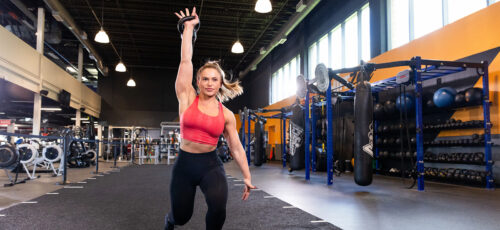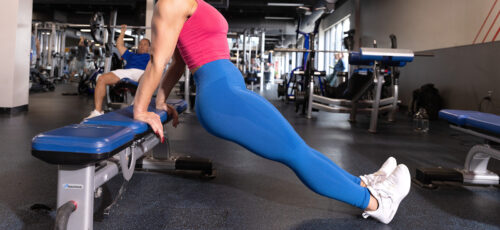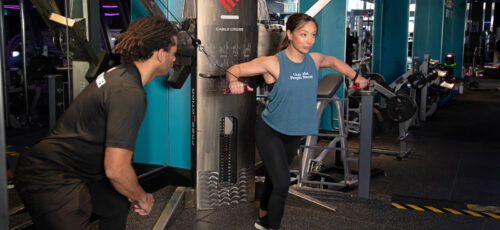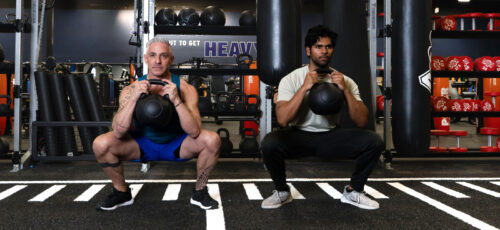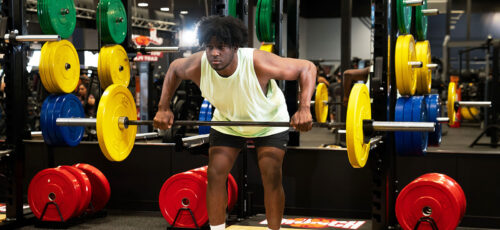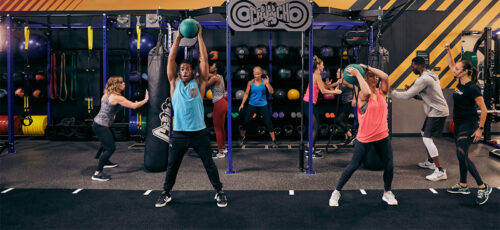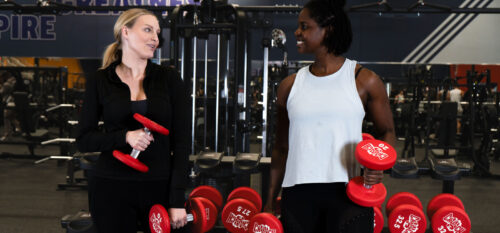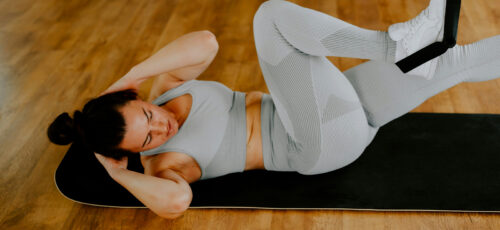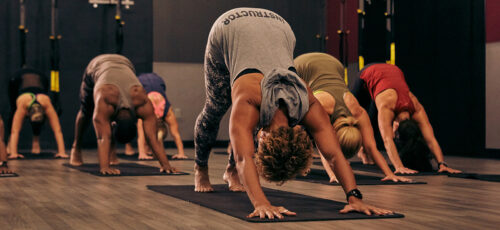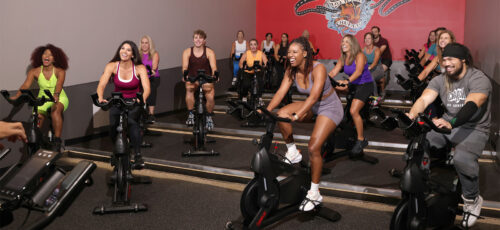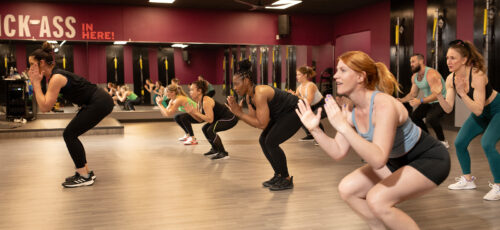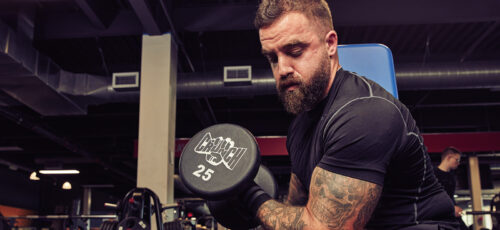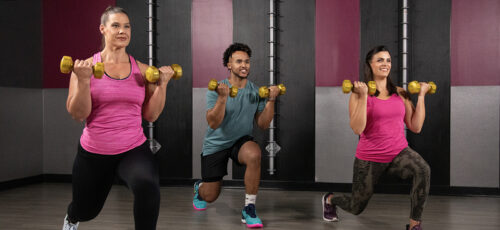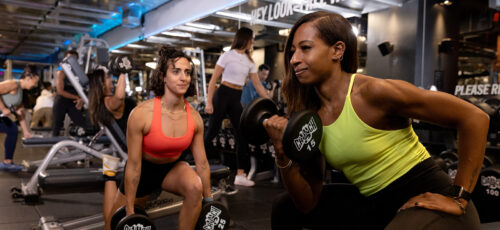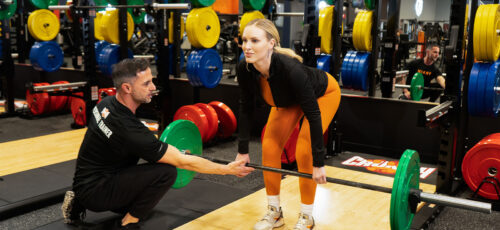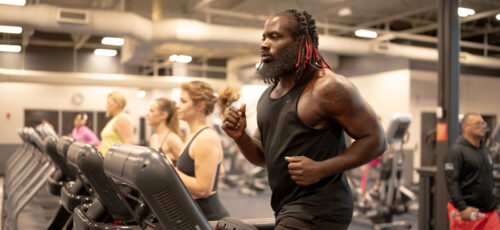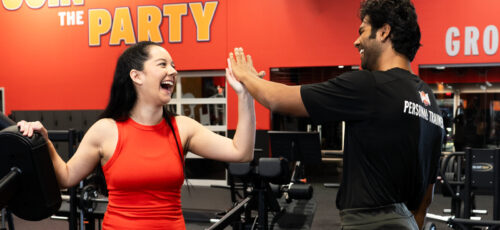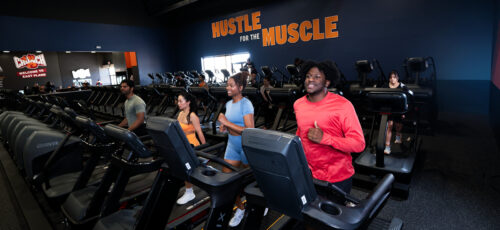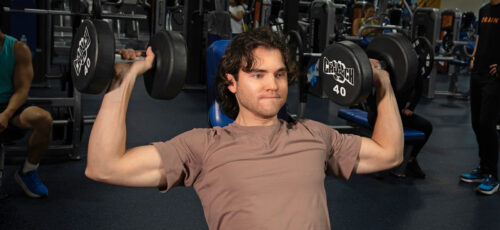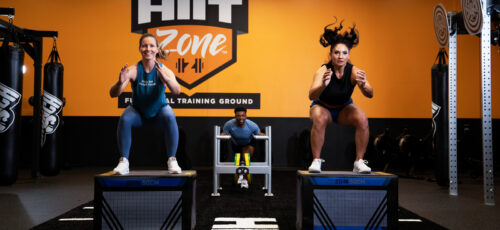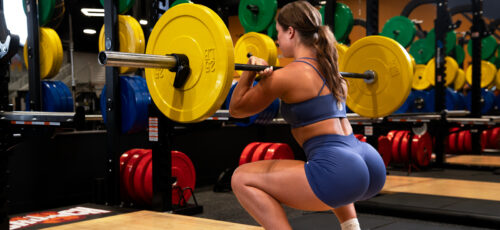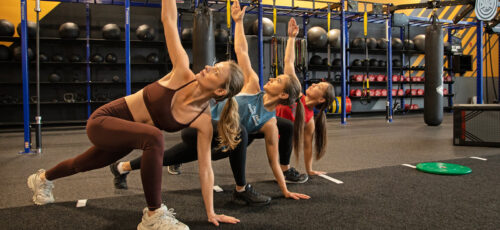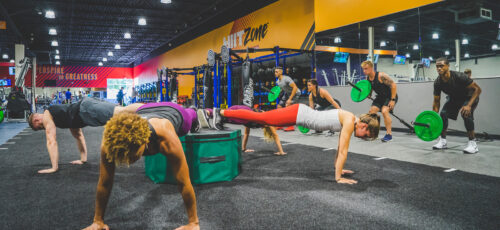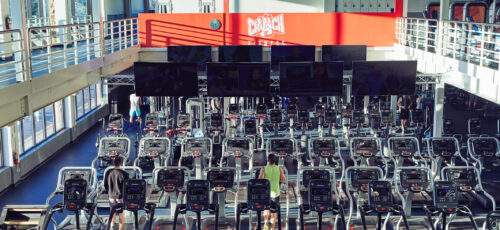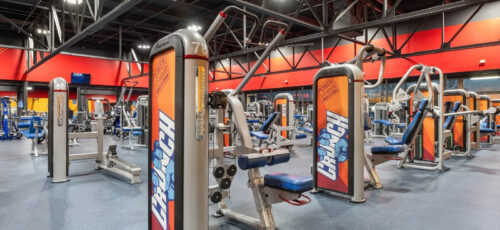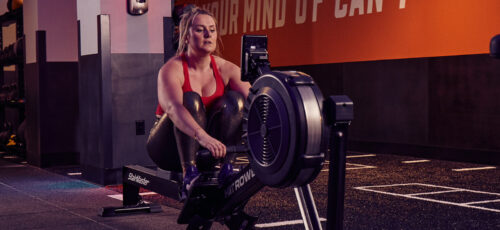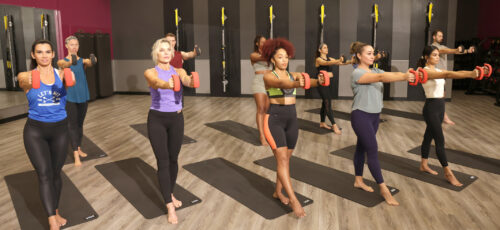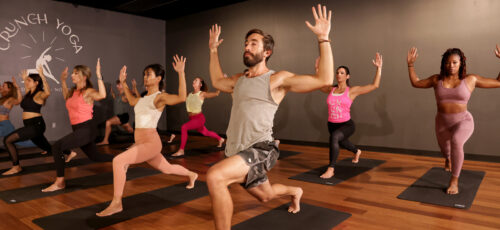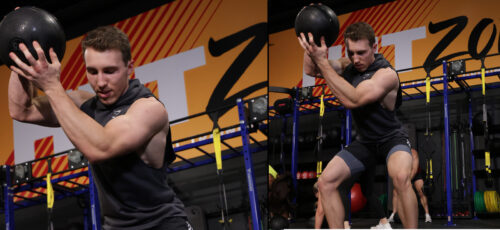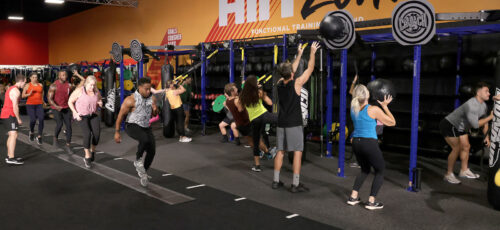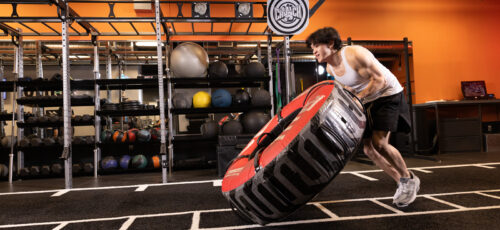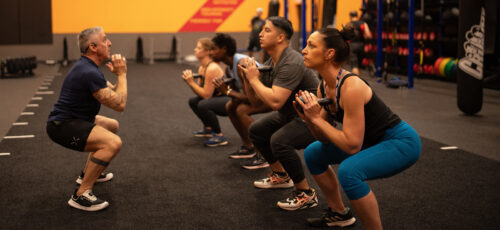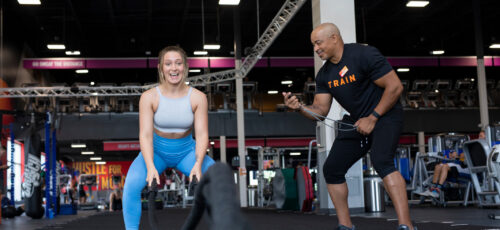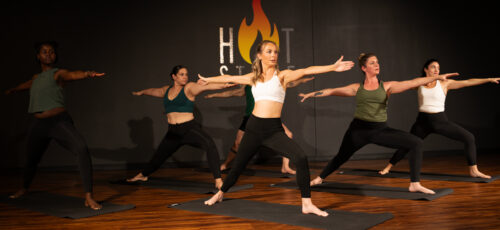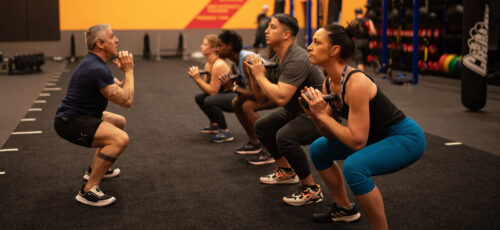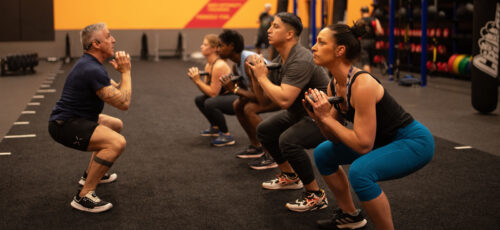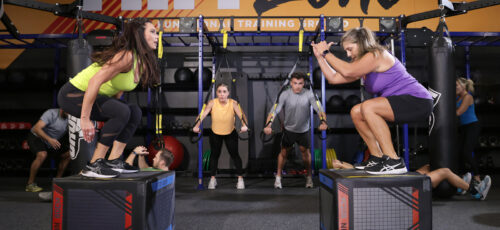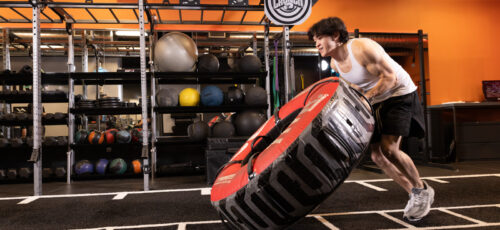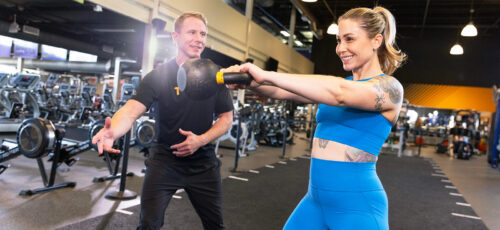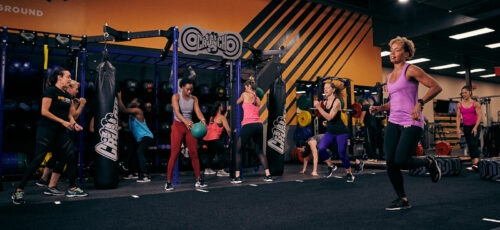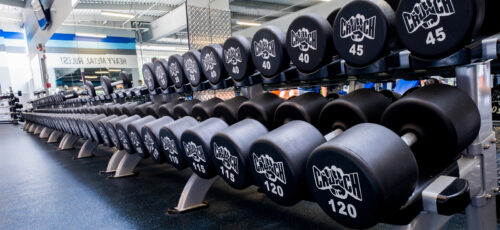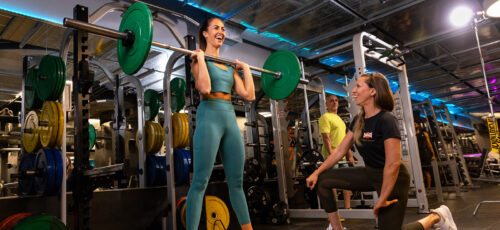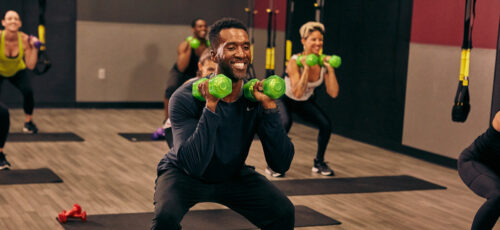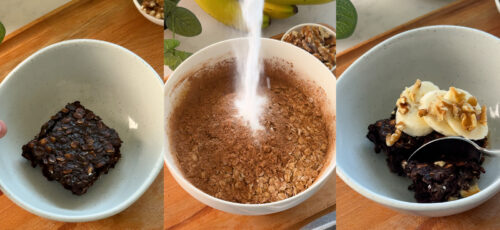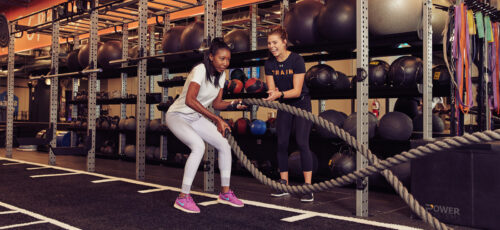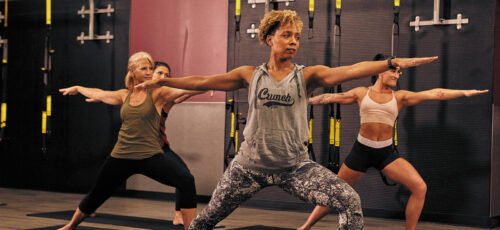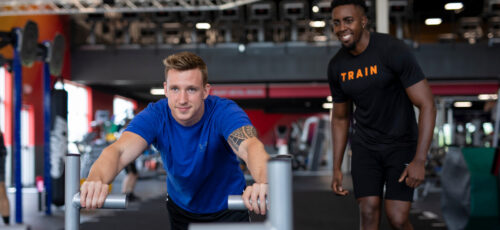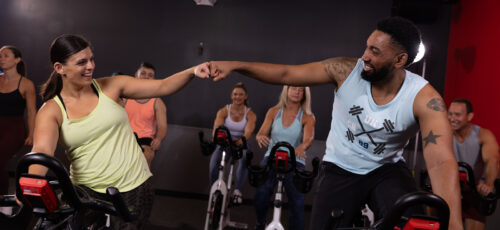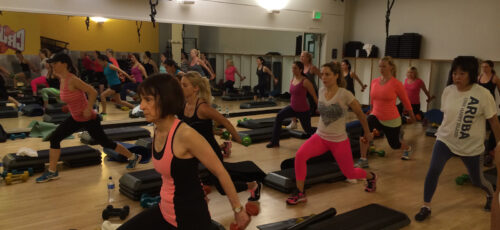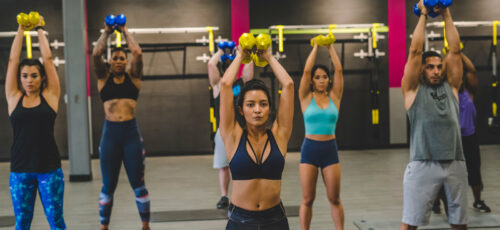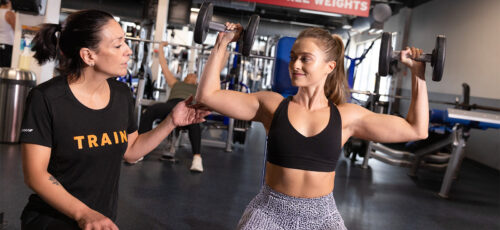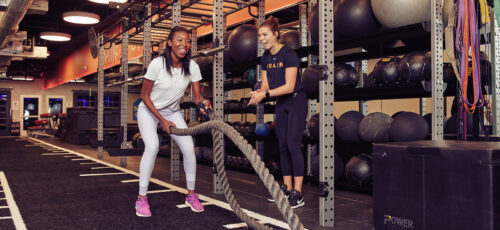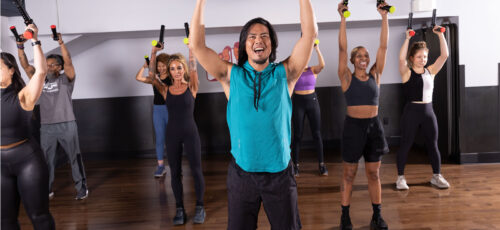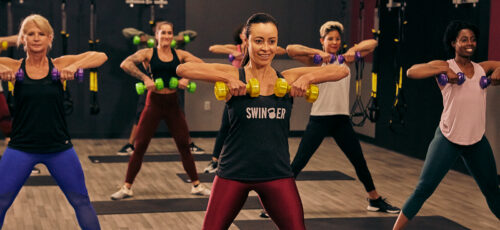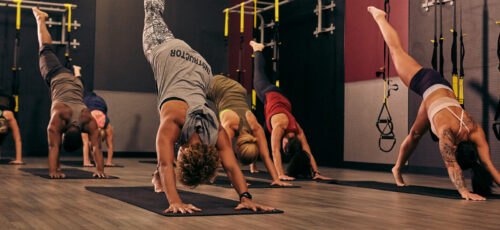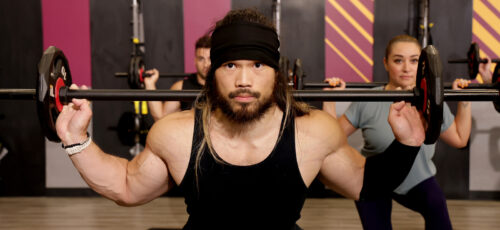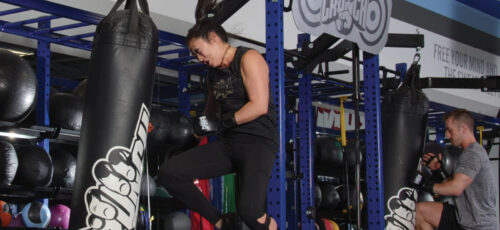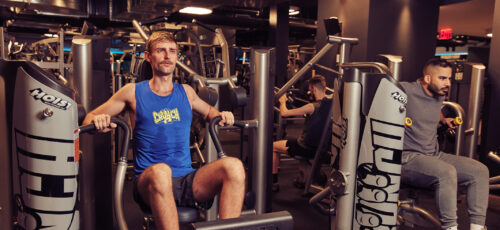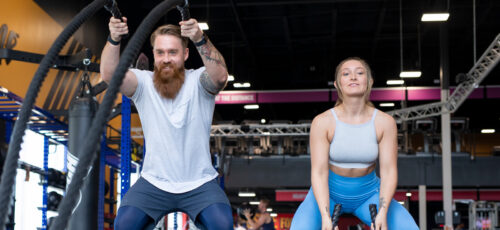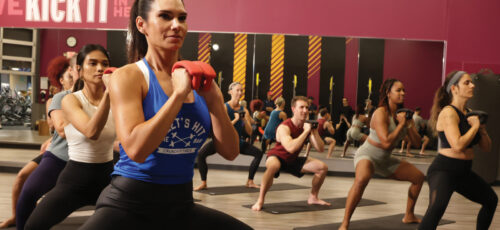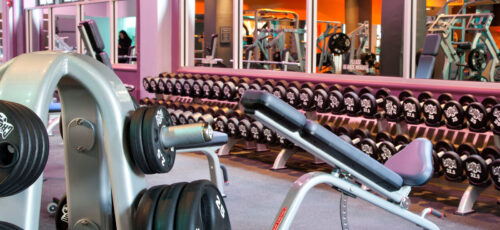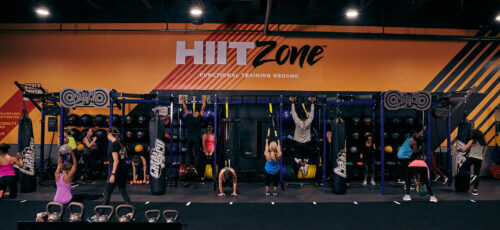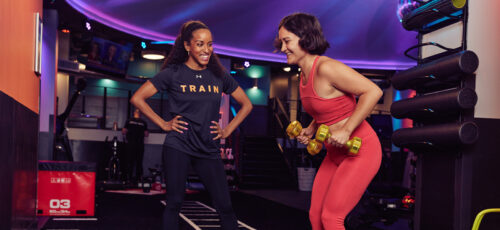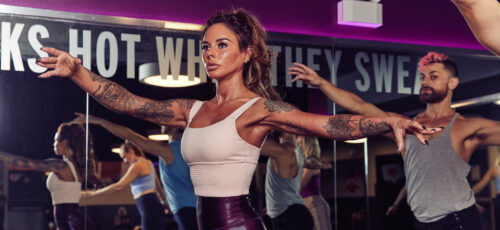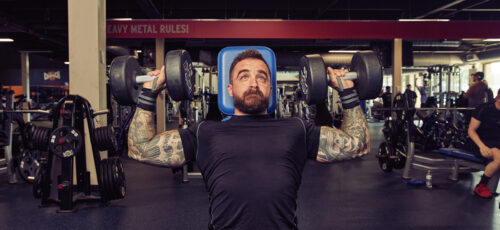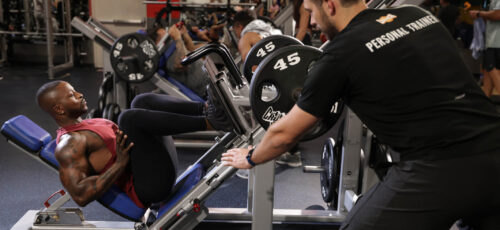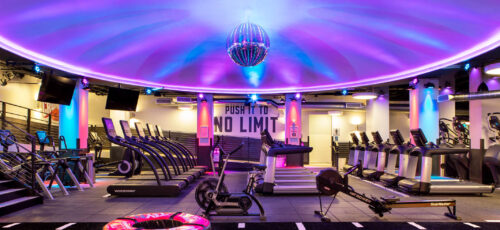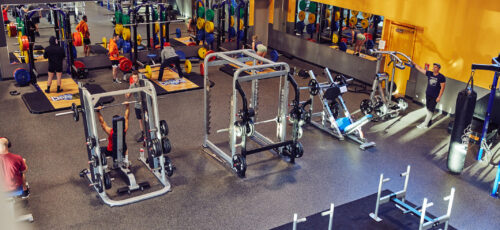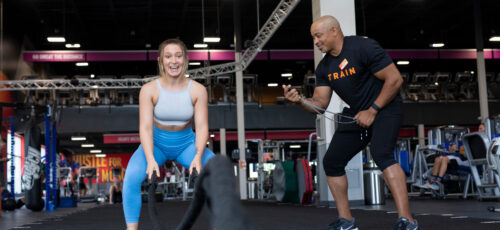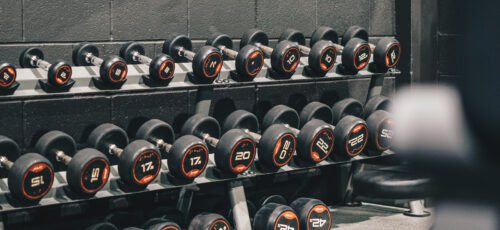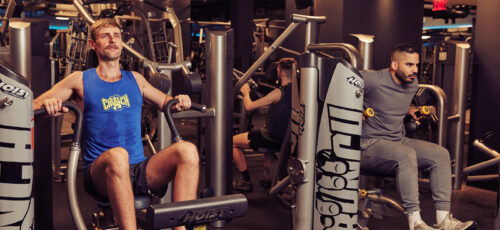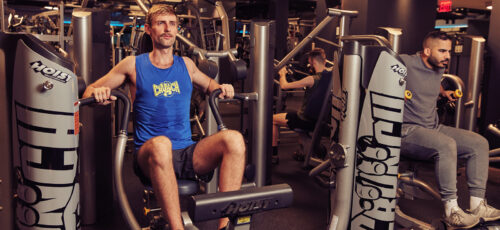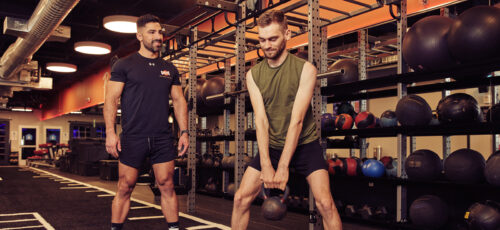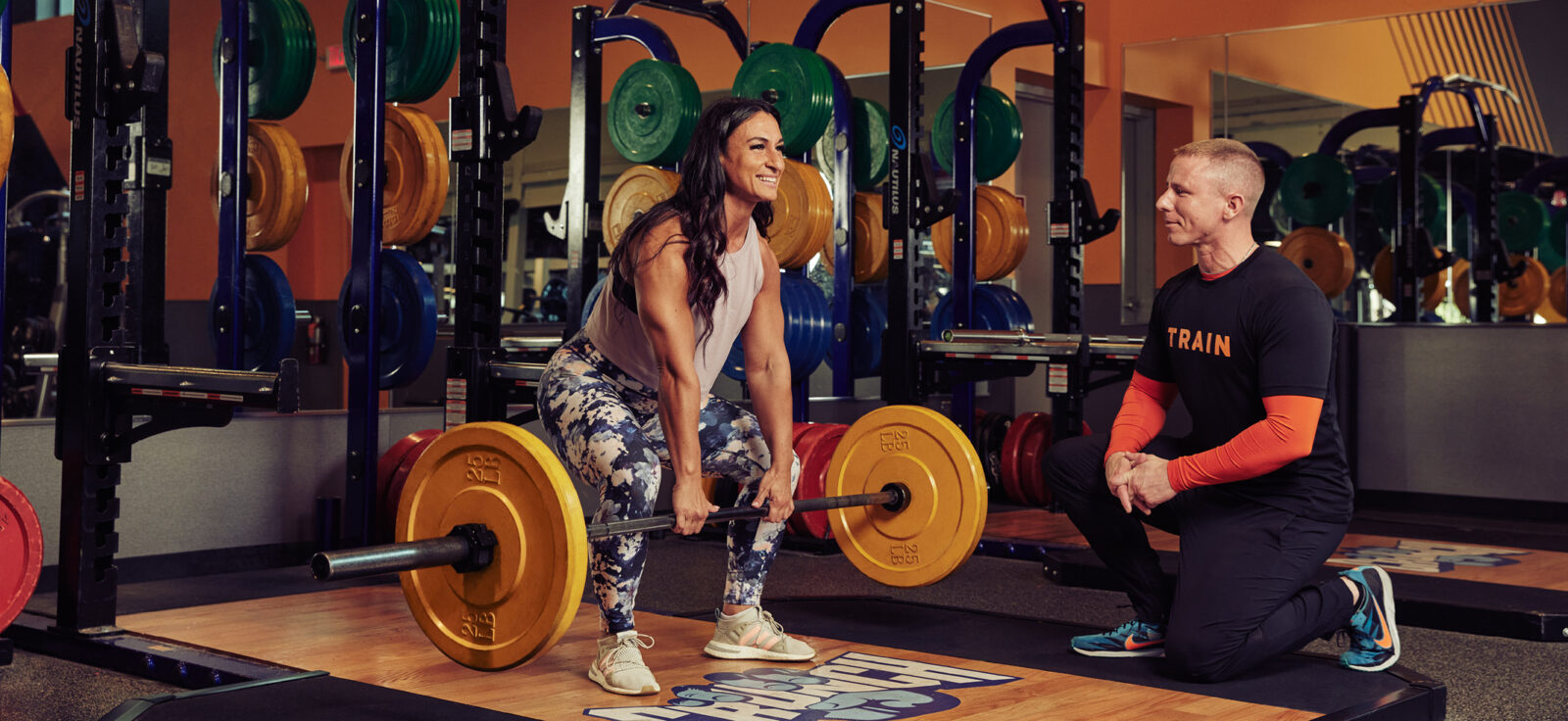
Even for the most experienced enthusiast, fitness is a complicated subject. And, despite the increasing number of reliable online sources, it can be difficult to find answers you can trust.
With the rise in popularity of strength training among average gym-goers, personal trainers and gym owners have begun hearing one question more often than others: how much exercise should I do per week to build muscle?
While the answer varies for each person depending on goals, training age, and level of fitness, there are some facts that stay consistent no matter who you are.
Throughout this article, we’ll give you the basic information you need to decide how many workouts you should do per week, what training structure interests you most, and how to continue learning about fitness.
If you still have questions by the time you’re done reading, we recommend reaching out to one of our expert personal trainers or group fitness instructors for extra guidance.
Understanding Workout Sets vs. Reps
When designing an effective workout routine, it’s crucial to consider the relationship between sets and reps (repetitions). Both significantly affect how your body adapts to training and achieves specific fitness goals.
When planning your weekly training volume, remember that balance is key. The relationship between sets and reps is not about one over the other, but about finding the right equilibrium. This comprehensive approach ensures that your workout routine is well-rounded and effective.
Conversely, if you do fewer reps in each set, usually with a heavier weight, you’ll likely need to perform more sets to reach your desired training volume.
Your specific fitness goals are like a compass, guiding you toward the optimal combination of sets and reps. This personalized approach ensures that your workout routine is not just effective, but uniquely yours.
- Low-rep ranges (1 to 5 reps per set) are ideal for building maximum strength and power. Fewer reps with heavier weights focus on enhancing muscle strength by recruiting more muscle fibers.
- Moderate-rep ranges (6 to 12 reps per set) are best for achieving a balance between increasing muscle size (hypertrophy) and improving strength. This range encourages muscle growth while still allowing for substantial strength gains.
- High-rep ranges (13 to 20 or more reps per set) are most effective for developing muscular endurance. Performing more repetitions with lighter weights improves the muscle’s ability to sustain prolonged activity, which is particularly beneficial for endurance athletes or those aiming for overall muscle toning.
After determining your specific goals — whether strength, hypertrophy, or endurance — you can decide if your workout routine should be more “set-heavy” (more sets with fewer reps) or “rep-heavy” (fewer sets with more reps).
This clarity will allow you to design a training program that aligns perfectly with your fitness objectives.

Weekly Training Volume vs. Frequency
When planning your workout routine, it’s essential to consider how you’ll distribute your weekly training volume — whether you prefer to complete it in a single session or spread it out over multiple workouts throughout the week.
Training Frequency refers to how often you train each muscle group per week. The way you distribute your training volume can significantly impact your overall results.
Single Session vs. Multiple Sessions:
- Single Session: Completing all your weekly training volume in one extended workout session can be demanding. While it might seem efficient, this approach can lead to greater fatigue and decreased performance as you progress through the workout. Your muscles may also experience extended periods of strain without adequate recovery time between sets, which could hinder overall effectiveness and increase the risk of overtraining.
- Multiple Sessions: Spreading your training volume across three to four sessions per week is often more beneficial. This approach allows for better fatigue management and provides ample time for muscle recovery between sessions. By dividing your workouts, you’ll experience less fatigue during each session, which helps maintain high performance throughout your workout. Furthermore, frequent training sessions can facilitate consistent muscle stimulation and adaptation, improving results.
The key advantage of multiple sessions is enhanced recovery. Muscles need time to repair and grow stronger after each workout, and frequent, moderate sessions allow for better rest and recovery between workouts.
This helps maintain performance levels throughout your workouts and reduces the risk of overtraining and injuries.
Thoughtfully distributing your training volume can optimize your results, ensuring effective performance and recovery.
Three Reliable Workout Routines
When planning out your weekly workout routine, it’s essential to make sure that you give enough attention to each of the major muscle groups. While some fitness professionals may break each muscle group into more specific categories, the five main muscle groups are:
- Back
- Shoulders
- Chest
- Arms
- Legs
Barring any specific goals or muscle imbalances, the average person should ideally train each muscle group twice per week for maximum results, with one to two exercises per muscle group during each workout session. That said, different workout routines structure these sessions in different ways, and which one is best depends entirely on your preferences and circumstances. Below, we’ll outline three reliable, time-tested routines.

Push Pull Legs (PPL)
This routine breaks down your weekly workouts based on movement patterns rather than just by body part. This means one workout focused on pull exercises, one on push exercises, and then one completely dedicated to legs.
Typically, people who use a PPL routine will do two push days, two pull days, and one leg day per week for five total days with four or five exercises on each day. To help reduce boredom or burnout, most people swap some movements every few weeks for other exercises of the same type. Also, individuals can adjust each movement’s rep range or how much weight they use depending on their goals. A basic PPL routine would look something like this:
Push
Seated Dumbbell Overhead Press – 3 sets of 10-12
Flat Barbell Bench Press – 3 sets of 5
EZ-Bar French Press – 3 sets of 10-12
Cable Chest Flys – 3 sets of 12-15
Pull
Bent Over Barbell Row – 3 sets of 8
Lat Pulldowns – 3 sets of 8-10
EZ-Bar Bicep Curl – 3 sets of 12-15
Reverse Delt Flys – 3 sets of 8-10
Legs
Barbell Squats – 3 sets of 8-10
Glute-Ham Raises – 3 sets of 12-15
Weighted Lunges – 3 sets of 8-10
Machine Leg Extensions – 3 sets of 10-12
Full Body Workout
Rather than working a specific muscle group each day that you train, full-body workouts generally train fewer overall days each week but perform more exercises during each session to work every muscle group. This means fewer days in the gym to build muscle but longer gym sessions for the days you do go.
Typically, a full-body workout routine will be split into two, three, or four days with rest days in between and use different exercises each day while still targeting the entire body. It’s important to remember that because you’re training your whole body each session, recovery is even more crucial than normal. Make sure you’re eating enough good food, drinking water, and getting enough sleep between sessions.

A basic full-body training split looks something like this:
Day 1
Sumo Deadlifts – 3 sets of 5
Kettlebell Swings – 5 sets of 8-10
Barbell Overhead Press – 3 sets of 5
Leg Press – 3 sets of 8-10
Rope Tricep Pushdowns – 3 sets of 10-12
Day 2
Bulgarian Split Squats – 3 sets of 8-10
Dumbbell Incline Press – 3 sets of 5
Pull-ups – 3 sets of 8-10 (assisted if needed!)
Leg Curls – 3 sets of 8-10
Hammer Curls – 3 sets of 12-15
Day 3
Landmine Press – 3 sets of 8-10
Dumbbell Row – 3 sets of 10-12
Back Hyper-Extensions – 3 sets of 12-15
Weighted Lunges – 3 sets of 8-10
Hanging Knee Raises – 3 sets of 12-15
Upper/Lower Split
As the name might suggest, an upper/lower split outlines different days each week for upper body exercises and lower body exercises. Usually, this type of workout program uses four lifting sessions each week–two for upper, two for lower–and three to four exercises for large muscle groups with isolation exercises for smaller muscles.
Among workout splits, an upper/lower routine is one of the simplest and may be best for those just getting into strength training. An example of an upper/lower routine would look something like this:
Upper Body
Standing Barbell Row – 3 sets of 6-8
Incline Barbell Bench Press – 3 sets of 8-10
Barbell High Rows – 3 sets of 8-10
Lateral Raises – 3 sets of 12-15
Chin-Ups – 3 sets of 6-8
Bodyweight Dips – 3 sets of 8-10
Lower Body
Linear Leg Press – 3 sets of 10-12
Seated Calf Raises – 5 sets of 12-15
Glute-Ham Raises – 3 sets of 10-12
Box Squats – 3 sets of 6-8
Machine Leg Extensions – 3 sets of 10-12
Quality Over Quantity
When trying to build strength or muscle, it’s easy to fall prey to the idea that more is always better. Whether it’s how many exercises you do, how many reps of those exercises you perform, or how much weight you lift, the mentality of “more” is often less effective than the mentality of “better.”
For strength training, this means focusing on high-quality reps with a full range of motion and proper technique. With chest exercises, for instance, focus on fully contracting and stretching your chest muscles during each rep. By making quality the primary goal of your workout routine, you minimize your risk of injury, learn how to use your muscles in a safe and healthy way and reduce wasted effort from low-quality repetitions.
How Muscles Grow
The human body is an amazing piece of machinery that speaks the language of necessity. So long as you learn to properly communicate your needs – and give it the proper resources – your body will perform astonishing feats to help you reach your fitness goals.
Specifically, your body responds to activities and exercises that make it struggle. In practice, this means that the reps closest to “failure” are the ones that most clearly tell your body that it needs to grow. By making sure to give the most possible effort to each gym session, you maximize the value of your workout plan and improve results.
No amount of effort, however, will cause progress if you don’t give your body the proper resources. For muscle growth, these resources are relatively simple:

Calories
Just like working out takes energy, building new muscle tissue during the recovery period also takes energy. In both cases, this energy comes from the calories found in food. To start, we suggest using an online calorie calculator to estimate your caloric “maintenance,” or the number of calories your body needs to maintain its current weight.
Then, take that number and add anywhere from 300 to 1000 calories, depending on how quickly you want to build muscle. Eating a larger surplus of calories each day will help you gain weight faster, but you will gain both fat and muscle. Eating a smaller surplus while training hard will mean slower weight gain but more muscle and less fat. Which you choose entirely depends on your goals and fitness values.
Protein
Generally, modern experts suggest 0.7-1 gram of protein per pound of body weight for muscle growth. That means that a 200lb individual should eat between 140 and 200 grams of protein per day. While this may seem like a lot, protein powders and foods such as lean meats, cottage cheese or Greek yogurt, and eggs can help bridge the gap.
Water
Your body uses water to transport nutrients throughout your body and to the muscles you use while working out. Without proper hydration, this process is disrupted, meaning slower recovery, more muscle and tendon soreness, and less progress.
For most individuals, 120 to 150 ounces of water per day is enough to keep them hydrated. If you sweat heavily or perform strenuous cardio in addition to your resistance training, such as a HIIT class, consider adjusting your water intake to compensate.
Finally, hydration during a workout is just as important as hydration after you’re done exercising. Experts suggest drinking roughly 20 ounces of water two to three hours before exercising. This way, your body will have the hydration it needs to supply your muscles with nutrients during a workout.
Sleep
Even more than nutrition, sleep is one of the most critical elements of any fitness routine, regardless of whether you want to lose weight, build muscle, or improve overall health. When you lift weights or perform other types of resistance training, you cause small breaks or tears in the tissue of your muscles. During rest periods (especially while sleeping), your body repairs these tears and makes them stronger, which in turn causes your muscles to grow.
When you don’t get enough high-quality sleep, however, this process becomes much less efficient. The longer you go without properly recovering from your workout routine, the more likely you are to become injured, stay continuously sore, or progress less quickly than you might otherwise.
How to Optimize Your Workout Routine for Muscle Growth
No matter which workout regimen you choose, there are essential factors to consider to maximize your results and ensure you’re training effectively.
Rest Periods
Understanding how long to rest between sets is crucial for performance and recovery. The general rule is that the heavier the weight you lift, the longer your rest periods should be.
- Heavy Lifting (Lower Repetitions): If you’re performing exercises with heavy weights for low reps (typically 1-5 reps), aim to rest at least 2 to 3 minutes between sets. This allows your muscles to recover adequately and replenish energy stores so you can maintain strength and power in subsequent sets.
- Moderate to Light Lifting (Higher Repetitions): For workouts involving lighter weights with higher reps (usually 8-15 or more reps), shorter rest periods of 30 seconds to 1 minute are sufficient. Shorter rests elevate your heart rate, enhancing cardiovascular benefits and muscular endurance.
Adjusting your rest periods according to weight and intensity ensures that you get the most out of each exercise while preventing premature fatigue.
Choosing the Right Weight
Selecting the appropriate weight is vital for progression and safety. Whether you’re doing low, moderate, or high repetitions, the key is to challenge your muscles effectively.
- Challenge Yourself: The weight you choose should make the last few reps of each set difficult to complete while maintaining proper form. This level of challenge stimulates muscle growth and strength gains.
- Assess and Adjust: If you find that the final reps are executed easily, it’s a sign that the weight is too light. Gradually increase the weight to continue progressing and to avoid hitting a plateau.
You promote adaptation by consistently challenging your muscles, increasing strength and muscle development over time.
Comprehensive Recovery
Recovery is critical to any fitness routine and extends beyond just resting between workouts. It involves a combination of adequate rest, proper nutrition, hydration, and sleep.
- Nutrition: Fuel your body with a balanced diet of proteins, carbohydrates, and healthy fats. Nutrients are essential for muscle repair, energy, and overall performance.
- Hydration: Staying hydrated aids in muscle function and recovery. Dehydration can lead to decreased performance and increased risk of injury.
- Sleep: Aim for 7-9 hours of quality sleep each night. Sleep is when your body repairs muscle tissues and releases growth hormones vital for recovery.
- Active Recovery: Incorporate activities like stretching, yoga, or light cardio on rest days to promote blood flow and reduce muscle soreness.
- Stress Management: High stress can impede recovery. Practices such as meditation, deep-breathing exercises, or leisurely walks can help manage stress levels.
Paying attention to these recovery aspects will help you maximize your workout results, prevent overtraining, and keep you feeling energized.
Bringing It All Together
To get the most out of your workout routine:
- Adjust rest periods based on the intensity of your lifts.
- Choose weights that make your last reps challenging.
- Prioritize recovery through proper nutrition, hydration, sleep, and stress management.
By focusing on these details, you’ll create a well-rounded fitness program that promotes continuous improvement and helps you achieve your health and fitness goals efficiently.
Join Us!
Crunch promotes a culture of positivity, inclusivity, and fun with no judgments by providing an environment for all individuals regardless of their health and fitness goals. Find a Crunch gym near you to try our free trial membership, or join Crunch now. We’re here for you – at the gym or at home. Access the best live & on-demand workouts anytime, anywhere with Crunch+. Ready to get sweaty? Try hundreds of workouts for free! Start your free trial now!









